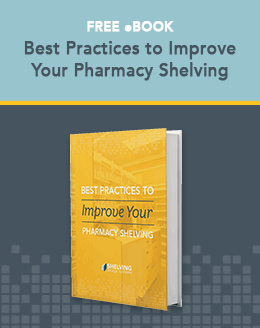 While retail display is all about showcasing your products attractively and in an aesthetically pleasing way so the customers will be drawn to them and will therefore be more likely to buy them, there are other factors that need to be taken into consideration as well for a truly healthy bottom line.
While retail display is all about showcasing your products attractively and in an aesthetically pleasing way so the customers will be drawn to them and will therefore be more likely to buy them, there are other factors that need to be taken into consideration as well for a truly healthy bottom line.
Therefore, you also have to figure out how to increase your shelf efficiency when you use displays with lots of shelving space, like gondolas.
Gondolas are arguably the most ubiquitous and effective of the retail displays, since they can be easily arranged into an endless variety of configurations. Using them as a centerpiece of your retail displays makes the most effective use of limited retail space, of course, but can also help you increase product sales through maximum visibility. That is, when you put the right products at just the right heights on the shelves in a retail display, you can positively impact sales. Here's how you do it:
Designate shelving levels into four categories
For each retail display unit that has at least four shelves, designate each shelf into one of four categories:
-
Lower level: from floor level to up to three feet above floor level
The lowermost shelving can be used for large products that customers can't miss, or for "anchor products" that customers are looking for specifically. Products placed on this level of shelving should be large enough for customers to see easily without having to stoop or squat to find what they need.
-
Middle level: from three to five feet above floor level
The middle level of any retail display shelving is generally easy for people to see even when they're fairly close to the shelving unit. While your most popular or expensive products shouldn't be placed here, you can place products that are less important but still good sellers when they have high visibility on this level. Small label products can also be placed here for best visibility without taking up premium space.
-
Eye level: five to six feet above floor level
As the most visible section of your retail display shelving, use eye level shelving judiciously to sell expensive, popular, or highly desired products that have a great impact on your bottom line. You can also use eye level shelving in combination with middle and lower level shelving in the same unit to create complementary product sales; the highly touted product goes on the eye level shelving, while the complementary "secondary anchor" product or products are displayed on the middle and lower level shelving as accessories or additions to the eye level product.
-
Topmost level: Over six feet above floor level
The topmost level is not to be used for display unless display elements are firmly attached to the shelves and cannot fall and cause injury. Topmost shelves should not be used for displays with product that can be removed by customers.
The topmost level of retail shelving is often used to store extra product that customers are not to access without help. To truly use your topmost level for retail display purposes, however, you can place large fixed displays on this level that cannot be removed by customers.
These "top shelving displays" will create an eye-catching draw to those retail shelving units by virtue of their high visibility and appeal, and can make topmost shelving very valuable for advertising purposes. By using this shelving for display purposes only (not for product storage), you also reduce the risk of customer or employee injury caused by falling merchandise.




